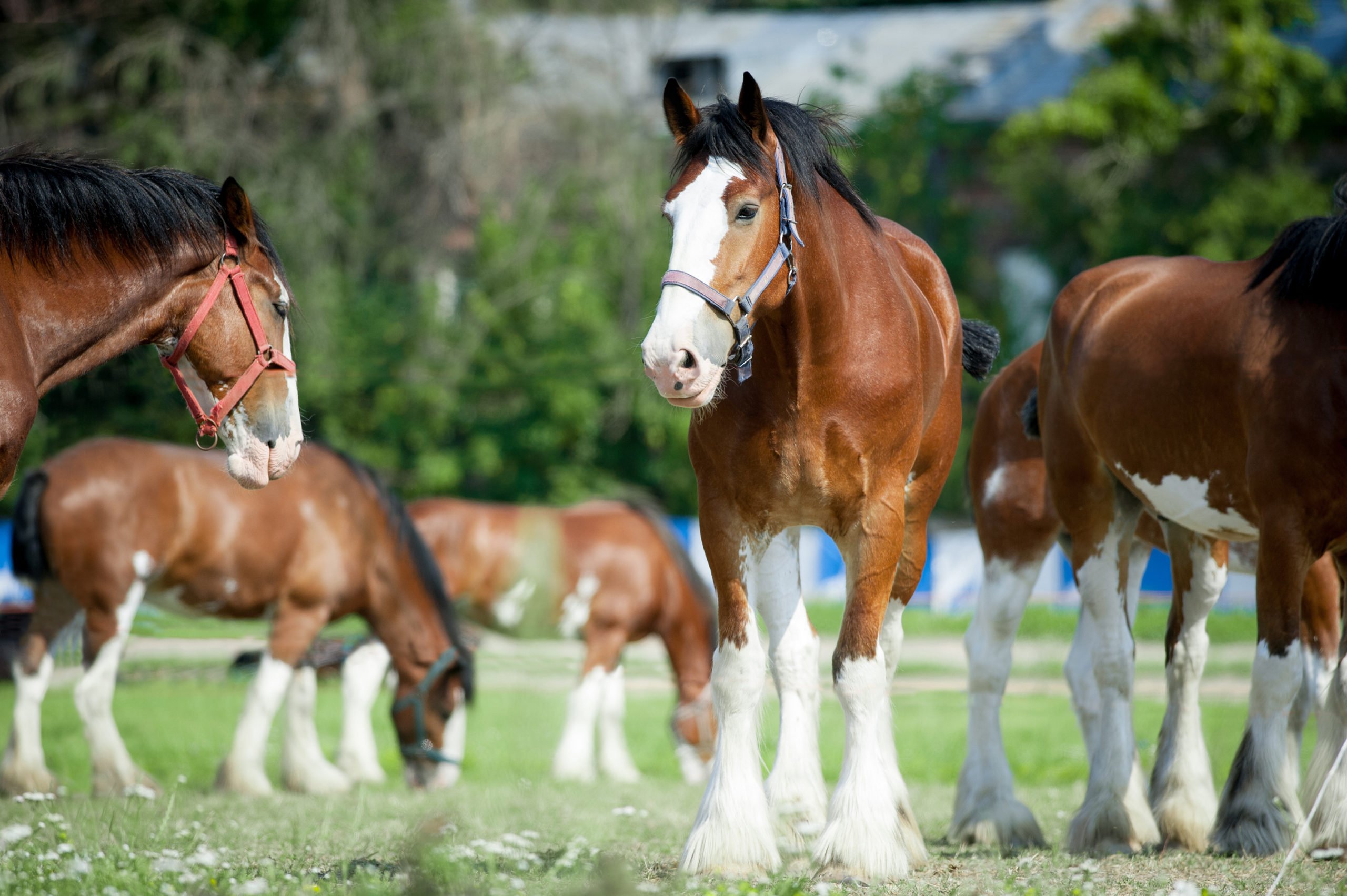
Heartbreakingly, the historic Clydesdale horse breed is under threat of extinction. The Clydesdale originated from Scotland and was first used as an agriculture horse. Today, Clydesdales are still used for draught purposes, including agriculture and carriage driving, and they are also shown and ridden, as well as kept for pleasure. Clydesdales are a popular breed when it comes to carriage services and parade horses because of their beautiful, feathery white feet. They are shown in lead line and harness classes as well as at national exhibitions.

Today, the Clydesdale breed is in trouble. There are approximately 30 purebred Clydesdales in South Africa and only around 5,000 worldwide.
A history
Clydesdale horses take their name from Clydesdale, the old name for Lanarkshire, noted for the River Clyde. During the mid 18th century, Flemish stallions were imported to Scotland and bred to local mares. This progeny was considerably larger than the local stock. The breed’s popularity and population increased during the 1990s, but by 2005, the Rare Breeds Survival Trust had moved the breed to ‘at risk’ status, meaning there were fewer than 1,500 breeding females in the United Kingdom. By 2010, the numbers had improved and the Clydesdales had been moved back to ‘vulnerable’ status. The Clydesdale is now considered to be ‘at watch’ status by the American Livestock Breeds Conservancy. As of 2010, there were and still are fewer than 2,500 horses registered annually in the United States of America, and there are estimated to be around 5,000 Clydesdales worldwide. The numbers are determined to be around 4,000 in the USA and Canada, 800 in the UK, sadly only 32 registered in South Africa, and the remainder in other countries including Russia, Japan and Germany.

Arrival in South Africa
The first recorded Clydesdale horses brought into South Africa were by Grunenbrau Breweries. At some point between 1959 and 1962, the Bloemfontein Municipality stopped using these horses to draught the old sewerage wagons.
Alistair Martin, a businessman from Johannesburg, had a great love for the Clydesdale horse and kept a small stud of these horses. Jinny Martin was the stud manager at the time, who assisted with going overseas to the United Kingdom and the USA to select the first Clydesdale horses for importation. In 1972, they brought in some of the best Clydesdale stallions from the USA. The stallions, Glencoe Gallagher and Iron Horse McGregor, were among the imported lot and had both won numerous American competition titles. In 1986, Jinny also imported Phesdo Annie Ruadh 233 (a mare), Doura – Champion of the Glen 182 (a stallion), as well as another mare named Helena who came from Scotland, and a stallion named Weaverdale Sensation who came from England. All the mares imported by Jinny were already in foal at the time of transit.
Thanks to the absolute passion for the breed shown by Jinny Martin, these horses are the main ancestors to most of the South African Clydesdale horses in the country. We honour and respect Jinny Martin for her efforts and dedication to this breed over the years.

